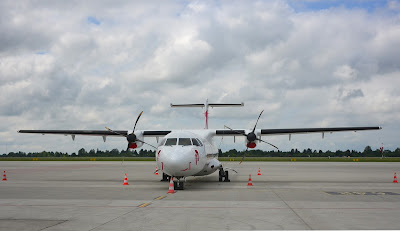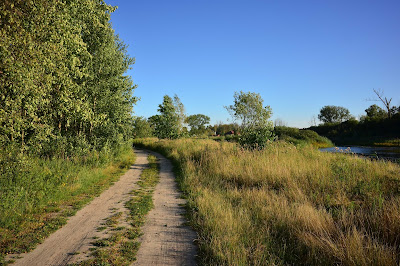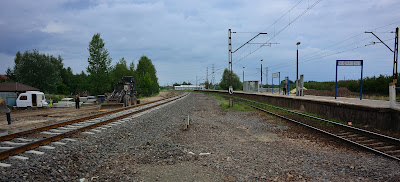On the morning of Wednesday 21 July, along with 89 other young people of Polish origin, I set off from London's Victoria Station bound for Poland. It was a holiday that was to shape my destiny and the course of my life.
Since the early 1970s, the Polish parish in Ealing, where I lived, organised summer holidays for its youth, at first setting off in coaches for places of pilgrimage in France, Spain and Morocco, such as Loretto and Montserrat.
But in 1975, a controversial decision was taken to make Poland the destination of these visits. The controversy within the Polish emigre community was whether it was right to travel to the People's Republic of Poland, dominated by the Soviet Union, and to accept the numerous compromises this would entail.
Some emigré elders - army veterans, and the scouting leaders in particular - were against. Less doctrinaire voices thought it would be good for the generation of young Poles born in Britain to see their fatherland, under the watchful eye of the parish clergy.
The coincidences needed for this to happen were impressive. Ksiądz Okoński, the priest tasked with looking after the spiritual well-being of the parish's younger souls, happened to be the brother of the personal assistant to Cardinal Wyszyński, the Primate of Poland. And Ksiądz Honkisz, the parish priest, happened to have been in the same Home Army unit during the Warsaw Uprising as
Kazimierz Kąkol, at the time the Minister of Religious Affairs.
Strings were pulled and the show got off the ground. Ninety young people from the capitalist West would spend five weeks in summer being driven in two coaches all over Poland, staying mainly in seminaries, and getting to know their
ojczyzna. The holidays were called Montserrat, after the Spanish monastery that the Ealing parish's youth had visited in earlier years.
There had to be a
quid pro quo. Along with the visits to Gothic cathedrals, places of pilgrimage, seminaries and monasteries, there were visits to factories, there were film shows - and it was clear that the coach drivers that drove us around communist Poland worked for someone other than PKS. This was the era of
propaganda sukcesu, as First Secretary Edward Gierek spent money borrowed from the West on infrastructure, industry and consumer goods. Economically, it was a flash in the pan.
But for us, blissfully unaware of the geopolitical realities of the time, it was huge fun. Yes, there was Mass every day, and the Rosary would be recited in the coaches from destination to destination, but with 45 girls and 45 boys aged between 15 and 20, and with 200 zlotys to the pound on the black market, the attractions were clear.
Below: a typical day; about one-third of the group are visible in this photograph, taken by Andrzej Poloczek. Who I strongly suspect was standing on a bench to get this shot.
We saw a vast amount of Poland over those five weeks. The trip was hugely educational. And for me, this was the first of three such trips. I returned with the group in 1977 and 1979, building up a far broader picture of Poland than many people of my parent's generation ever had.
The train from Victoria took us to Dover; we boarded a ferry that would take us to Oostende. Two Polish coaches met us there, to take us to Poland, calling at Bruges, Brussels and Cologne en route.
Looking at the itinerary for the 1976 visit -
Szlakiem Wisły, it was called, we visited Gdańsk, Toruń, Płock, Warsaw, Lublin, Sandomierz, Kraków, Żywiec and Poznań and many points in between.
Crossing the Polish border from East Germany - a country with a specific atmosphere of its own - was a memorable experience for me; my first contact with Poland in ten years. I was moved by the landscape, the quiet, traffic-free rural roads, the road-signs, village names, in Polish - an emotional feeling that my English friends back home in London could not share.
First stop was
Paradyż, a seminary school. We spent five nights here; for many of us this was the first taste of Poland. For me - I'd last been in Poland when I was eight. Here's a photograph from that summer 40 years ago, taken by Andrzej Poloczek,
below.
Below: the road between Jordanowo and Gościkowo [2014 imagery courtesy of Google Maps], with the Paradyż seminary to the left. The trees have grown tall, obscuring the church towers, the seminary has been renovated with dormer windows in the roof, which itself has been re-tiled.
The next port of call was Gdańsk - Oliwa to be precise. I returned here in
2012 for the wedding of Rysiek and Blanka Szydło. Again, we stayed here for five nights, using the Gdańsk seminary as a base, visiting the sights of
Gdańsk and the surrounding region, including the Lenin Shipyard, Malbork and
Hel.
In the 19 years I've lived in Poland, I have revisited many of the places that we called in at on those summer holidays in the 1970s. There are a few that I haven't; one being Pelplin. But Malbork,
Toruń,
Płock that we visited on our way from Gdańsk to Warsaw I have seen. And many more, as you'll read below...
In Warsaw, we had the rare honour to visit
Cardinal Stefan Wyszyński in the Primate's Palace in Warsaw,
below. A figure of huge historical and religious significance in post-war Poland - we teenagers were unable to grasp the enormity, the importance of the man we met that day. Photo by Andrzej Poloczek.
While in Warsaw, we were given three days to visit family across Poland. For me, this was the first opportunity to fly. I bought a return ticket for an internal LOT flight from Warsaw to Wrocław (in an Antonov An-24), from where I took a steam train (departure about 4am, I recall) to Kłodzko, from there to Lądek Zdrój to meet
Ciocia Dziunia and her family. I returned to Warsaw the next day, and feasted at the Forum Hotel (today the Novotel Centrum), outside of which I changed a one-pound note with a black-market
cinkciarz and received 200 złotys for it. I proceeded to spend this on roast pheasant, armagnac sorbet, brandy and a large cigar in the Forum. Afterwards, finding I still had time and money on my hand, I changed another one-pound note, went back into the hotel restaurant and ordered the same again. Cheap holidays in other people's misery.
From Warsaw we travelled on to
Lublin, calling at Kazimierz Dolny on the way. Photo below by Andrzej Poloczek from 1976. Most of the people you can see wandering around are from our group. And this is the height of the summer holidays, 10 August 1976.
Below: contemporary Kazimierz, photo taken by me over eight years ago, on the occasion of Tessa and Adam's wedding.
Tłumy, panie!

We also took in Sandomierz (I'll be back again there next month), Kraków, Nowa Huta and Wieliczka, took a boat trip down the Dunajec river and made it into the mountains - Żywiec and Wisła. Visiting Auschwitz and before that Majdanek made a profound impression on me; the unbearable inhumanity of mass extermination of human beings as an industrial activity. I was physically sick.
Heading back, we visited the Jasna Góra monastery in Częstochowa, holiest of Polish shrines. The return journey was via Piotrków Trybunalski (which I visited earlier this summer), Łódź, Łęczyca (which I passed through twice last August) and Poznań, where we spent our last night in Poland before boarding the international coaches that would take us back to Oostende and Dover.
The holiday had a profound and lasting effect on me. It shaped my love of Poland; despite the attractions of university which I was to discover weeks after my return from this holiday, I wanted to return for another such holiday, which I did, twice. Three such holidays, each one around five weeks long, each one visiting many different towns and cities and other significant places across Poland. They gave me an excellent taste of what Poland actually was - the politics notwithstanding.
The legacy of those kilometres in the coach, when we weren't reciting the Rosary, we'd be listening to music. Four LPs were played over and over on the coaches' tape decks -
Desire, by Bob Dylan, including the songs
Hurricane and
Mozambique,
Eric Clapton's
461 Ocean Boulevard, from which the song
Let it Grow was the most salient number, and two albums that have truly stood the test of time - David Bowie's
Station to Station and
Trick of the Tail by Genesis. While the former I associate mainly with my trip to Wrocław, the latter -
in particular the track Entangled - will forever be the soundtrack of that holiday. I wrote the other day about memory and qualia and how our personalities are shaped by those memories that return, triggered or unbidden. That particular summer holiday, 40 years ago, was instrumental in creating in me the desire to spend my summers in the vast, eternal, sunlit Poland, either revisiting places I'd visited on those holidays, or just discovering new ones.
Below: me, then. Not a single molecule, not a single atom, that was part of me then, is part of me now. They have all changed, four times, since 1976. But those strong memories linger, waiting to be triggered. Photo by Andrzej Poloczek.
If you took part in one of the Montserrat holidays to Poland in the 1970s, there is a series of DVDs based on the home movies shot by Ks. Okoński and others, put together by
Marcin Hauke in Ealing back in 2009. Worth getting hold of. Drop me an email and I'll put you in touch.
Researching this piece online, I came across this doctoral thesis about the history of the Polish parish in Ealing, 1950-2000, written by Katarzyna Fuksa. It appears in different guises online, so google her name and 'parafia NMP Ealing'. Download the .pdf file then Ctrl+F and type in 'Montserrat'.
Thanks to
Andrzej Poloczek, thanks to
Rysiek Szydło for curating the photos on his website.
This time last year:
Last night's storm
This time two years ago:
Drifting south with the sun: bicycle hobo
This time four years ago:
Royal Parks in the rain
This time five years ago:
Storm clouds over Warsaw, Dolinka under water
This time six years ago:
Round-up of pics from Dobra
This time seven years ago:
Conservatism - UK or Polish style?
This time eight years ago:
Wheat and development
This time nine years ago:
A previous visit to London






























































